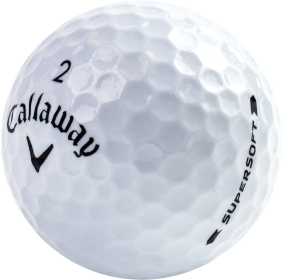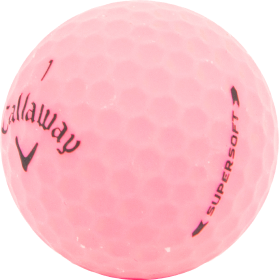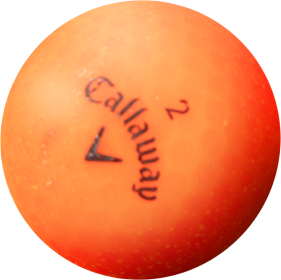The Best Case for Good Good & YouTube Golf: Why Creator Golf Is Growing the Game (Not Wrecking It)

The Best Case for Good Good & YouTube Golf: Why Creator Golf Is Growing the Game (Not Wrecking It)
Introduction
“Good Good and YouTube golf are destroying traditional golf.” You’ve probably heard the line. It’s easy to want to call back to a time before the internet. The rise of creator-led golf (with Good Good at the forefront) is actually a powerful tailwind for the sport’s future. From junior engagement to course economics, YouTube golf is widening the funnel, energizing lapsed players, and turning casual viewers into committed golfers. This is the best case for YouTube golf—and why it improves golf overall.
1) Access > Elitism: Lowering the Barrier to Entry
Traditional golf can feel gated: expensive, slow, and intimidating. Creator golf flips that script. Good Good and similar channels model accessibility—public courses, relatable shots, beginner-friendly formats. Viewers see themselves in the players and think, “That's how me and my friends hang out.” That approachable tone is a conversion engine, turning spectators into new golfers who buy balls, book tee times, and support courses.
Key takeaway: When participation rises, everyone wins—manufacturers, courses, coaches, and the game’s long-term health.
2) Storytelling Beats Scorekeeping: Emotional Hooks Create Lifelong Fans
Pro broadcasts center on stroke averages; YouTube golf centers on stories: road trips, challenges, pranks, character arcs. Good Good’s secret sauce is serialized chemistry—friendships, competition, and redemption. That narrative keeps attention between the “wow” shots and the chunked wedges. It’s how non-golfers become golf fans. Story-first content builds identity and community, which traditional broadcasts often fail to do for newcomers.
Translation: Golf goes from boring and becomes bingeable, shareable, and culturally relevant.
3) The New On-Ramp to Instruction and Improvement
Let's talk a little broader than Good Good Golf. YouTube golf is an instruction discovery layer. A fun vlog leads viewers to a drill video, then to a lesson, then to smarter practice. Creators demystify fundamentals—grip, alignment, target selection, short-game decisions—by explaining them in real time, in relatable language, on real turf. The result is a generation of self-starting golfers who arrive at ranges and lessons with momentum. Did we mention these resources are free?
4) Economic Lift: Tee Sheets, Merch, Sponsorships, Travel
Creator tours fill pro-ams, charity scrambles, and course calendars. When Good Good visits a muni, tee sheets often spike afterward. Club pros report more fittings and more first-time lessons; resorts see destination demand driven by vlogs. Sponsors invest because creator audiences are measurable and engaged—fresh capital that ultimately supports jobs, maintenance, and junior programming. When people are exctied to play golf the quality of all of golf goes up!
Reality check: Healthy course economics protect the very “traditional” experiences critics want to preserve.
5) Culture Upgrade: Fun, Sportsmanship, and Real Etiquette
Do creators sometimes joke around? Sure. But watch closely: the top channels model pace of play, repairing ball marks, raking bunkers, giving putts properly in match play, and calling penalties. They normalize respectful competition and camaraderie. When millions see etiquette in action, it propagates. Creator golf has made good behavior part of the content, not a scolding afterthought.
6) Parasocial Community → Real Community
Comments sections become playing groups; DMs become range meetups. Creator golf blurs the line between media and membership. The result is self-organizing micro-communities that book tee times and stick with the game year-round. Traditional golf benefits from these new bonds—local leagues grow, club memberships get a bump, and junior programs fill faster. The results of more people talking online about translates into more golf in the real world.
7) Bridging the Pro Game and the Public Game
Good Good’s collabs with tour players, coaches, and college teams create a two-way bridge: pros reach young audiences; young audiences see elite skill up close. That cross-pollination humanizes the tour and elevates respect for competitive golf, while also showing pros enjoying casual formats—proof that traditional and creator golf can complement each other.
Common Criticisms—And the Strongest Rebuttals
“It’s not real golf.”
It’s real golf with different goals: entertainment and education. Traditional broadcasts optimize competition; creator golf optimizes participation. Both are essential, like pickup basketball and the NBA.
“It encourages bad habits.”
Watch the top channels: they emphasize alignment, club selection, course management, and etiquette. They show the misses—something TV often hides—teaching acceptance, smarter targets, and recovery strategies.
“It cheapens the brand of golf.”
On the contrary, it modernizes the brand. Fresh formats, clean production, and personality-driven narratives make golf culturally legible to people who never had a country club. That’s brand expansion, not dilution.
“They’re chasing clicks.”
Yes—and clicks are attention, the currency that funds junior clinics, course maintenance, travel economies, and new gear launches. The alternative isn’t purity; it’s obscurity.
The Long-Term Upside: A Bigger, Healthier Golf Ecosystem
-
More players means golf lives on in a younger demographic. More play means more golf courses
-
Smarter beginners mean less churn and steadier tee sheets across seasons.
-
Cultural relevance keeps golf in the conversation—and the algorithm.
-
Innovation pressure nudges traditional media to improve pacing, graphics, and storytelling.
Good Good and YouTube golf are not replacing tradition; they’re recruiting for it.
Conclusion
Golf doesn’t need a gatekeeper; it needs a greeter. YouTube golf are that welcome committee—meeting people where they scroll, inviting them to pick up a club, and showing that joy sits right next to challenge. Traditional golf stays traditional because creator golf keeps the tee sheet full. That’s not the end of the game. That’s longevity.










